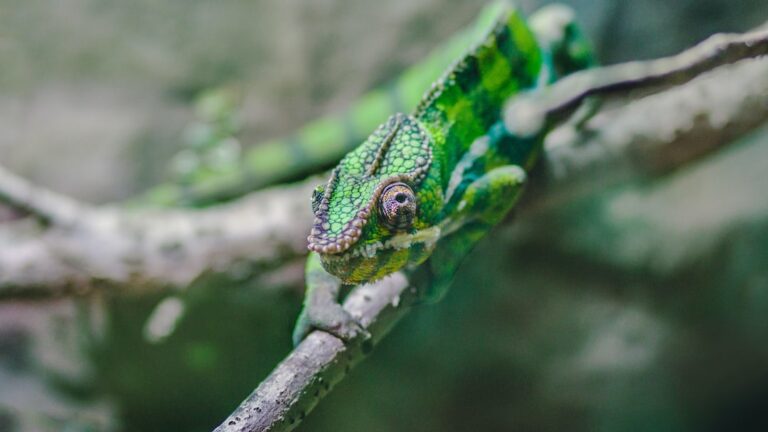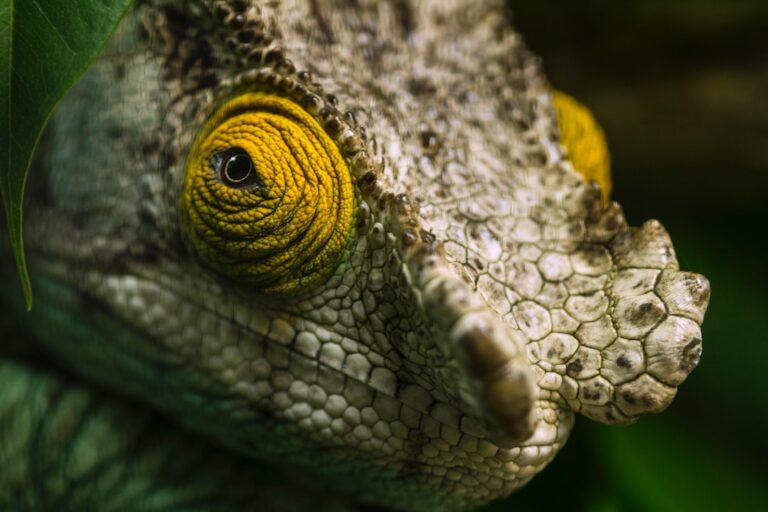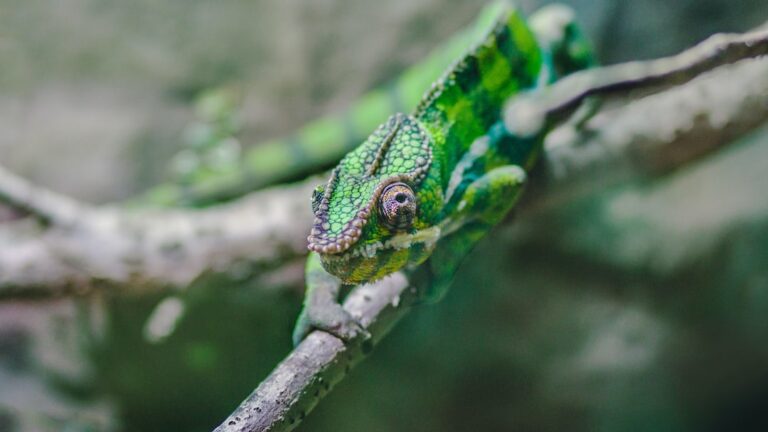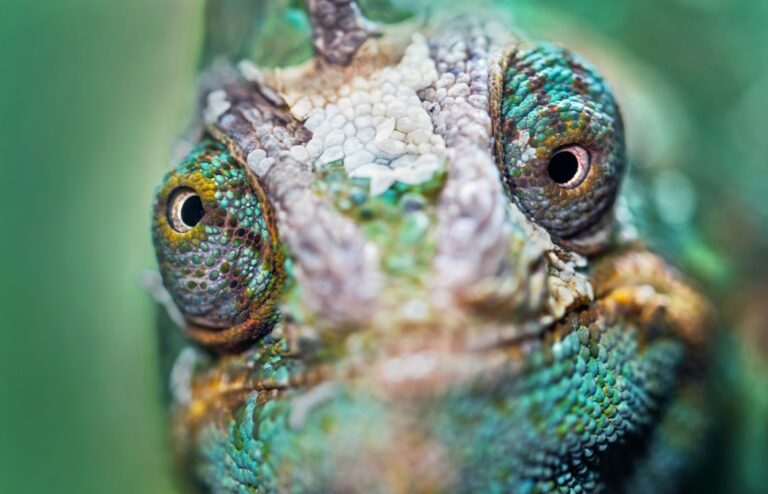Can Chameleons Eat Lettuce?
Chameleons are fascinating creatures that have captivated the attention of people for centuries. With their ability to change colors and their unique physical characteristics, they are truly one of nature’s wonders. Chameleons are known for their long, sticky tongues, independently moving eyes, and their ability to blend into their surroundings. They are found in various parts of the world, including Africa, Madagascar, and parts of Asia and Europe.
Table of Contents
Chameleon Diet: What Do They Eat in the Wild?
In the wild, chameleons have a varied diet consisting mainly of insects. They are insectivores and rely on a steady supply of insects to meet their nutritional needs. Some common insects that chameleons feed on include crickets, grasshoppers, flies, and moths. They use their long tongues to catch their prey, which they then consume whole.
A balanced diet is crucial for the health and well-being of chameleons. Insects provide essential nutrients such as protein, vitamins, and minerals that chameleons need to thrive. Without a proper diet, chameleons can suffer from malnutrition and develop various health issues.
Can Chameleons Eat Vegetables?
While chameleons primarily eat insects in the wild, they can also consume certain types of vegetables. However, it is important to note that vegetables should not be the main component of a chameleon’s diet. Insects should still make up the majority of their food intake.
Vegetables can provide some nutritional value for chameleons, but they should be given in moderation. Leafy greens such as kale, collard greens, and dandelion greens can be offered as occasional treats. These vegetables contain vitamins and minerals that can supplement a chameleon’s diet.
The Nutritional Value of Lettuce for Chameleons
Lettuce is a commonly available vegetable that many people have in their homes. However, it is not an ideal food for chameleons. Lettuce has very little nutritional value and does not provide the necessary nutrients that chameleons need to thrive.
Lettuce is primarily made up of water and contains very few vitamins and minerals. It lacks the protein and other essential nutrients that chameleons require for proper growth and development. Feeding lettuce to chameleons regularly can lead to malnutrition and other health issues.
Risks of Feeding Lettuce to Chameleons
Feeding lettuce to chameleons can pose several risks to their health. As mentioned earlier, lettuce lacks the necessary nutrients that chameleons need. A diet consisting mainly of lettuce can lead to malnutrition, weakened immune system, stunted growth, and even death in extreme cases.
Lettuce also has a high water content, which can cause digestive issues in chameleons. Chameleons are adapted to obtain most of their water from the insects they consume. Feeding them watery vegetables like lettuce can disrupt their natural hydration balance and lead to diarrhea or other digestive problems.
Alternatives to Lettuce for Chameleon Diets
Instead of feeding lettuce, there are several alternative foods that can be included in a chameleon’s diet. These foods provide a better balance of nutrients and are more suitable for their needs.
Some suitable alternatives include dark leafy greens such as kale, collard greens, and dandelion greens. These greens are rich in vitamins A and C, calcium, and other essential nutrients. Other options include squash, carrots, and bell peppers, which can be offered as occasional treats.
How to Properly Feed Your Chameleon
Proper feeding techniques are crucial for the health and well-being of chameleons. Here are some guidelines to follow when feeding your chameleon:
1. Offer a variety of insects: Chameleons require a diverse range of insects to meet their nutritional needs. Offer a variety of insects such as crickets, grasshoppers, flies, and moths to ensure a balanced diet.
2. Gut-load insects: Gut-loading is the process of feeding insects with nutritious foods before offering them to your chameleon. This ensures that the insects are packed with essential nutrients that will be passed on to your chameleon.
3. Dust insects with supplements: In addition to gut-loading, it is important to dust the insects with calcium and vitamin supplements. This helps to ensure that your chameleon is getting all the necessary nutrients.
4. Offer occasional vegetables: As mentioned earlier, vegetables can be offered as occasional treats. Dark leafy greens such as kale, collard greens, and dandelion greens are good options.
Signs of Malnutrition in Chameleons
It is important to be aware of the signs of malnutrition in chameleons so that you can take appropriate action if necessary. Some common signs include:
– Weight loss or poor growth
– Weakness or lethargy
– Dull or discolored skin
– Soft or deformed bones
– Difficulty shedding
– Decreased appetite
If you notice any of these signs, it is important to consult a veterinarian who specializes in reptiles. They can provide guidance on how to address the issue and ensure that your chameleon receives the proper care.
Common Mistakes to Avoid When Feeding Your Chameleon
There are several common mistakes that chameleon owners make when it comes to feeding their pets. These mistakes can have a negative impact on their health and well-being. Here are some common mistakes to avoid:
1. Feeding an imbalanced diet: Chameleons require a balanced diet that includes a variety of insects and occasional vegetables. Feeding them a diet that is too high in vegetables or lacking in essential nutrients can lead to health issues.
2. Overfeeding or underfeeding: It is important to feed your chameleon the appropriate amount of food. Overfeeding can lead to obesity and other health problems, while underfeeding can result in malnutrition.
3. Not providing enough hydration: Chameleons obtain most of their water from the insects they consume. It is important to ensure that they have access to clean water at all times.
4. Using inappropriate supplements: When dusting insects with supplements, it is important to use the appropriate ones for chameleons. Using the wrong supplements or using them incorrectly can have negative effects on their health.
The Importance of a Balanced Diet for Your Chameleon
In conclusion, a balanced diet is crucial for the health and well-being of chameleons. While they primarily eat insects in the wild, they can also consume certain types of vegetables in moderation. Lettuce, however, should be avoided as it lacks the necessary nutrients and can lead to malnutrition and other health issues.
It is important to provide a varied diet that includes a variety of insects and occasional vegetables. Proper feeding techniques, such as gut-loading insects and dusting them with supplements, should be followed to ensure that your chameleon receives all the necessary nutrients.
By avoiding common mistakes and providing a balanced diet, you can ensure the long-term health and well-being of your chameleon. Remember to monitor their health closely and consult a veterinarian if you notice any signs of malnutrition or other health issues. With proper care and nutrition, your chameleon can thrive and bring joy to your life for many years to come.
If you’re interested in learning more about the dietary habits of reptiles, you might also want to check out this article on “Can Chameleons Eat Superworms?” Superworms are a popular choice for feeding reptiles, but it’s important to understand if they are suitable for chameleons. This article provides valuable insights and guidelines on whether superworms can be included in a chameleon’s diet. To read more about it, click here.







